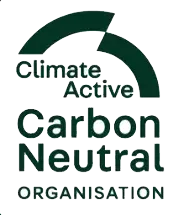Implementing a new Quality Management System (QMS): What comes first? The chicken or the egg?
So, you’re working for an exciting brand-new start-up. It’s getting to the pointy end – you understand all your processes, but you need to have these documented and in place to control and direct your regulated activities, ready for your initial regulatory inspection. Or perhaps your business is evolving – you need to incorporate regulation-driven changes into existing processes ready for when your new regulated products become authorised. This blog will outline various approaches that can be implemented for setting up your Quality Management System (QMS).
Where do you start?
All seasoned pharma professionals know that to get anything done in the industry, you have to raise a change control. But hang on, what if you haven’t got a change process yet? Or a document control procedure for that matter?
You still need to make sure that your approach:
- Ensures your compliance with your applicable regulations
- Is thorough and manages both quality and business risks
- Is robust enough to withstand interrogation by a regulator
Scope
The TGA have a comprehensive list of those documents they expect to see in place at the point of inspection. It’s important to note that regulators are reasonable in their approach and expectations when inspecting new or changed systems with their focus being on your demonstration of control.
You might be asked whether or not they have yet been implemented and you may be justified in saying no for some of them and argue that processes such as product quality reviews will be implemented after a year of manufacture.
On the other hand, for business reasons, some processes may need to be implemented well ahead of receiving your licence. e.g. supplier qualification. Change control may also fall in this category if you choose to use it as part of your project management framework.
How do you choose the right approach of implementing a QMS?
Unlike many processes within the therapeutic goods industry, assuming that you can meet the above and are happy to defend your approach in front of an inspector, there are several ways you could approach implementing your new QMS.
The approach that you choose to take might depend on your team’s level of previous experience and comfort in this Quality field, the business’s risk appetite and the available timeframe.
Each of these options presents its own risks, benefits, and disadvantages which you should assess according to the needs of your business.
Managing changes throughout the project
Inevitably there are going to be changes to the approach or execution of a QMS project along the way. You may also need to remedy the findings from your initial inspection. How you control, record and approve these changes will depend on the approach that you’ve decided to take but, needless to say, they must be recorded and justified.
Key take-home message
This conversation is set to be ongoing. Regardless of the approach you choose, it’s essential that you’re able to justify it in front of managers and inspectors alike and demonstrate that you have appropriate control over your QMS.
Further reading about QMS and document writing
PharmOut has a number of other blogs to help you make the best of your QMS:
- GMP Documentation – Top Tips for Writing User-friendly GMP Documents
- Technical writing is a science, not an art
- Plan your route: The role of process mapping in SOP writing (COMING SOON!)
- Getting the best from your experts: SME engagement (COMING SOON!
- Form design: It’s all about the white space
- Form use: The right way to fill in a form
Support from PharmOut
PharmOut can offer document writing assistance, ongoing advice, mentoring and/or support as you develop and implement your PQS at your site; we have a team of experienced GMP technical writers who can help.
Or if you’d like some training, please visit our website:
Technical Writing Training Courses
ISO 13485 – Quality Management Systems for Medical Devices


